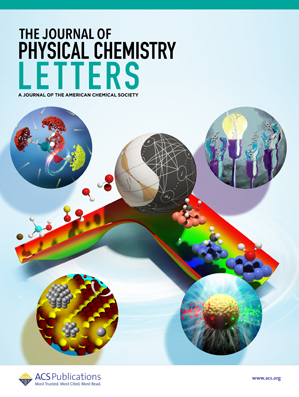dTAT1:一种对遗传密码扩展具有低光细胞毒性的非天然核苷
IF 4.8
2区 化学
Q2 CHEMISTRY, PHYSICAL
引用次数: 0
摘要
合成生物学旨在通过增加细胞信息存储和检索来扩展遗传密码。最近的一项进展是dTAT1-dNaM非自然碱基对,它比dTPT3-dNaM具有更强的光稳定性和热稳定性,同时在体外和体内保持高效率和保真度。然而,dTAT1在紫外光下的光物理和细胞毒性行为尚未被研究。我们证明dTAT1在390nm激发下填充三重态,但在细胞中表现出最小的细胞毒性。对活性氧的分析表明,dTAT1产生的单线态氧量子产率较低,为17%,而产生的超氧化物是一种危害较小的活性氧。其三重态寿命比dTPT3短2.7倍,光细胞毒性较低。这些发现突出了dTAT1在安全遗传密码扩展和治疗应用方面的潜力,为设计对细胞健康影响最小的下一代非天然核苷提供了有价值的见解。本文章由计算机程序翻译,如有差异,请以英文原文为准。

dTAT1: An Unnatural Nucleoside Exhibiting Low Photocytotoxicity for Genetic Code Expansion
Synthetic biology aims to expand the genetic code by increasing cellular information storage and retrieval. A recent advance is the dTAT1-dNaM unnatural base pair, which is more photo- and thermostable than dTPT3-dNaM while maintaining high efficiency and fidelity in vitro and in vivo. However, the photophysics and cytotoxicity behavior of dTAT1 under UV light have not been investigated. We demonstrate that dTAT1 populates the triplet state upon 390 nm excitation but exhibits minimal cytotoxicity in cells. Analysis of reactive oxygen species indicates that dTAT1 produces a low singlet oxygen quantum yield of 17% while it generates superoxide, a less harmful reactive oxygen species. Its triplet lifetime is 2.7 times shorter than that of dTPT3, contributing to its lower photocytotoxicity. These findings highlight the potential of dTAT1 for safe genetic code expansion and therapeutic applications, providing valuable insights for designing next-generation unnatural nucleosides with minimal impact on cellular health.
求助全文
通过发布文献求助,成功后即可免费获取论文全文。
去求助
来源期刊

The Journal of Physical Chemistry Letters
CHEMISTRY, PHYSICAL-NANOSCIENCE & NANOTECHNOLOGY
CiteScore
9.60
自引率
7.00%
发文量
1519
审稿时长
1.6 months
期刊介绍:
The Journal of Physical Chemistry (JPC) Letters is devoted to reporting new and original experimental and theoretical basic research of interest to physical chemists, biophysical chemists, chemical physicists, physicists, material scientists, and engineers. An important criterion for acceptance is that the paper reports a significant scientific advance and/or physical insight such that rapid publication is essential. Two issues of JPC Letters are published each month.
 求助内容:
求助内容: 应助结果提醒方式:
应助结果提醒方式:


